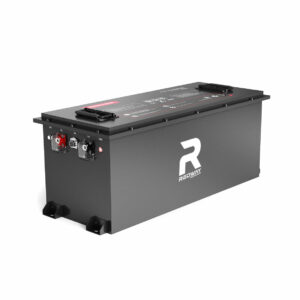What Are the Key Applications and Industry Use Cases for RV Batteries?
RV batteries power essential systems like lighting, refrigeration, and HVAC, ensuring comfort off-grid. Common types include lithium-ion, AGM, and lead-acid. Industry use cases span emergency response, mobile healthcare, and eco-tourism. Lithium batteries dominate due to longevity and efficiency. Emerging applications include renewable energy storage and disaster relief. This article explores technical, environmental, and economic aspects of RV battery adoption.
How Do RV Batteries Power Off-Grid Living?
RV batteries enable off-grid living by storing energy from solar panels or generators. They power lighting, water pumps, refrigerators, and entertainment systems. Lithium-ion variants provide higher cycle life, reducing replacement frequency. Advanced battery management systems (BMS) optimize discharge rates, preventing energy waste. For remote work or nomadic lifestyles, reliable batteries ensure uninterrupted connectivity and appliance functionality.

What Types of Batteries Are Best for RVs?
Lithium-ion batteries offer superior energy density and lifespan (3,000–5,000 cycles) compared to AGM (500–1,000 cycles) or lead-acid (300–500 cycles). AGM batteries are maintenance-free and vibration-resistant, ideal for rugged terrains. Flooded lead-acid batteries are cost-effective but require regular upkeep. Hybrid systems combining lithium and solar are gaining traction for sustainable RV energy solutions.
| Battery Type | Cycle Life | Weight (lbs/kWh) |
|---|---|---|
| Lithium-ion | 3,000–5,000 | 15–20 |
| AGM | 500–1,000 | 30–40 |
| Lead-Acid | 300–500 | 50–60 |
Why Are Lithium-Ion Batteries Revolutionizing RV Applications?
Lithium-ion batteries reduce weight by 50% compared to lead-acid, improving fuel efficiency. They charge faster and tolerate deep discharges without capacity loss. Integrated BMS enhances safety by monitoring temperature and voltage fluctuations. Their scalability supports high-energy demands of modern RVs, including electric vehicle (EV) towing. Cost declines (40% since 2015) further drive adoption.
Recent advancements include self-heating lithium batteries that maintain efficiency in sub-zero temperatures, addressing a historic weakness. Manufacturers now offer modular designs allowing users to stack batteries like LEGO blocks for customized capacity. The U.S. Department of Energy reports lithium RV batteries now achieve 95% round-trip efficiency compared to 80% for lead-acid models. This leap enables RVs to power energy-intensive appliances like induction cooktops and tankless water heaters without generator support. Fleet operators particularly benefit – Escapees RV Club data shows members using lithium systems reduce annual fuel costs by $1,200+ through reduced generator use.
How Do Temperature Extremes Affect RV Battery Performance?
Cold temperatures slow chemical reactions, reducing lead-acid battery capacity by 20–50%. Lithium-ion batteries perform better in sub-zero conditions but require heating pads below -4°F. High heat accelerates corrosion in lead-acid batteries and degrades lithium-ion lifespan. Thermal management systems, like insulated compartments and active cooling, mitigate these effects. Optimal operating ranges are 50°F–86°F for most RV batteries.
Field studies from Arctic expeditions reveal lithium batteries with thermal management maintain 85% capacity at -22°F, versus 35% for unheated AGM batteries. Conversely, Arizona RV users report lithium batteries lose 0.5% capacity per month when stored at 104°F, compared to 3% monthly loss for flooded lead-acid. Manufacturers now incorporate phase-change materials in battery casings that absorb excess heat. Some luxury RVs feature climate-controlled battery bays with automated vents – Dethleffs reports these systems extend battery life by 40% in extreme environments. Proper temperature control isn’t just about longevity; it’s a safety imperative – uncontrolled thermal runaway in lithium batteries can reach 1,472°F within seconds.
What Innovations Are Shaping the Future of RV Batteries?
Solid-state batteries promise 2x energy density and faster charging by 2030. AI-driven BMS predicts failures and optimizes charging cycles. Graphene-enhanced anodes boost lithium-ion efficiency by 30%. Wireless charging pads integrated into RV parks eliminate cable clutter. Second-life EV batteries are repurposed for RVs, reducing costs and e-waste. These advancements align with global net-zero targets.
Expert Views: Redway’s Insights on RV Battery Trends
“The shift to lithium is irreversible. We’re seeing 80% of new RV owners opting for lithium setups. Modular battery systems allow users to scale capacity based on trip duration. Integration with vehicle-to-grid (V2G) tech will let RVs sell excess power back to utilities, transforming them into mobile power assets.”
Conclusion: The Expanding Horizon of RV Battery Applications
RV batteries transcend recreational use, becoming critical in healthcare, disaster response, and sustainable tourism. Lithium-ion dominance, coupled with smart tech, redefines energy autonomy. As industries prioritize mobility and eco-efficiency, RV batteries will underpin next-gen mobile infrastructure. Stakeholders must balance performance, cost, and environmental impact to harness this potential fully.
News
RV Batteries Power Diverse Mobile and Off-Grid Solutions
RV batteries are essential for recreational vehicles, mobile workspaces, emergency power, and remote living, providing reliable energy storage for lighting, appliances, and electronics.
2025 Advancements in RV Battery Applications
1. AI-Powered Energy Management for Smart RVs
New RV battery systems now integrate AI to optimize power distribution between solar panels, generators, and grid connections, maximizing efficiency for long-term travel.
2. Modular Battery Swapping for Fleet Campers
Companies are piloting battery-swap stations at campgrounds, allowing RV users to exchange depleted batteries for fully charged units in minutes, reducing downtime.
3. High-Capacity Batteries for Electric RV Conversions
Next-gen RV batteries now support all-electric motorhome conversions, delivering enough range and power to replace traditional gas/diesel systems entirely.
FAQs: RV Battery Applications and Industry Use Cases
- How Long Do RV Batteries Typically Last?
- Lithium-ion RV batteries last 8–12 years (3,000–5,000 cycles), AGM batteries 4–6 years (500–1,000 cycles), and lead-acid 2–4 years (300–500 cycles). Lifespan depends on usage patterns, depth of discharge, and maintenance.
- Can RV Batteries Power Air Conditioning Units?
- Yes, high-capacity lithium batteries (300–600 Ah) can power RV AC units for 4–8 hours. Inverter efficiency, ambient temperature, and insulation impact runtime. Hybrid systems with solar panels extend usability.
- Are Solar Panels Necessary for RV Batteries?
- Solar panels aren’t mandatory but enhance off-grid capability by replenishing batteries daily. They reduce generator reliance, cut fuel costs, and lower carbon emissions. For prolonged boondocking, solar is highly recommended.
